The Daredevil Wingwalking Pioneers
It took less than two decades from the Wright Brothers’ initial modest flight for stunt flying to become a phenomenon. It started after the end of World War 1, when pilots came home but with adrenaline still coursing through their bodies from living life on the edge. Eager to continue their thrill-seeking adventures, they found ways to acquire planes and finance their passion for flying. Traveling from town to town, these adventurous aviators offered rides to curious spectators, earning them the nickname "barnstormers" because they would often land at a local farm and negotiate with the owners to use their fields as makeshift runways for staging air shows. During the “roaring 20s”, many daredevil pilots made a living by captivating crowds with breathtaking feats across the United States and Canada. However, the ultimate risk-takers of their time were the wingwalkers, who fearlessly performed feats while perched on the wings of aircraft.
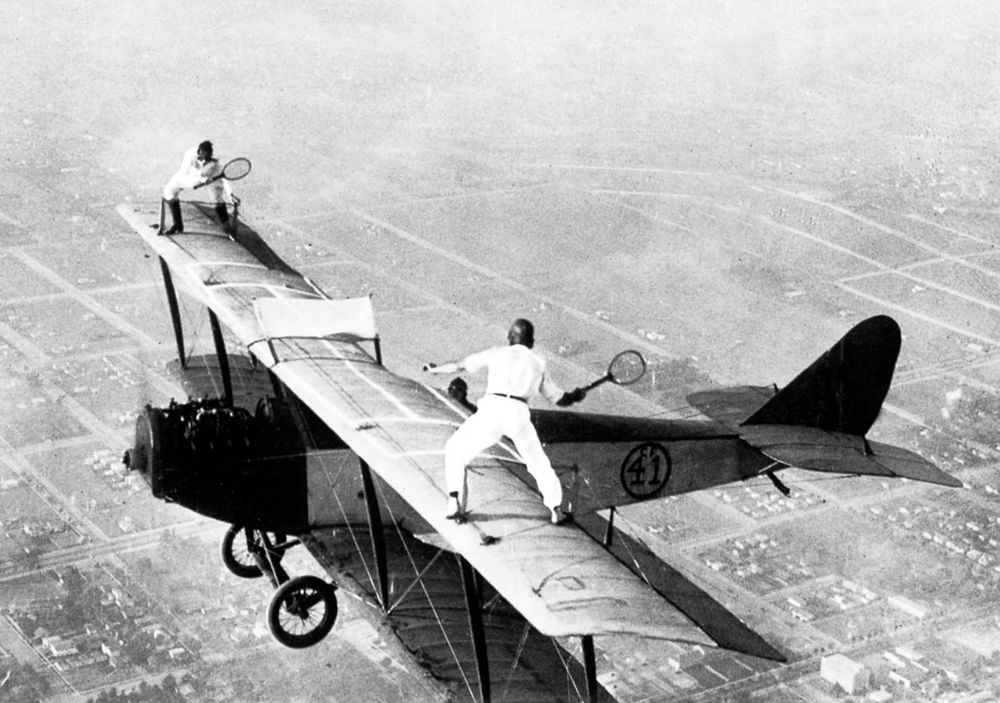 Van Unger and Gladys Roy play tennis on top of a biplane in 1925.
Van Unger and Gladys Roy play tennis on top of a biplane in 1925.
After Locklear left the Army Air Service, he became a professional barnstormer, performing in county fairs throughout North America and earning as much as $3,000 a day. Pretty soon, Locklear had become an international star. His trademark stunt included jumping from one aircraft to another, and the “Dance of Death,” in which two pilots in two aircraft would switch places in midair. He was also the first to transfer from a speeding car onto an aircraft via a rope ladder. Locklear perfected various wingwalking stunts, including handstands and hanging poses. He also helped develop the impressive act of hanging from a plane solely by grasping a trapeze bar or rope ladder with his teeth. His incredible performances caught the attention of fellow aerialists, who started emulating his moves and expanding on them as barnstorming gained popularity in the early 1920s.
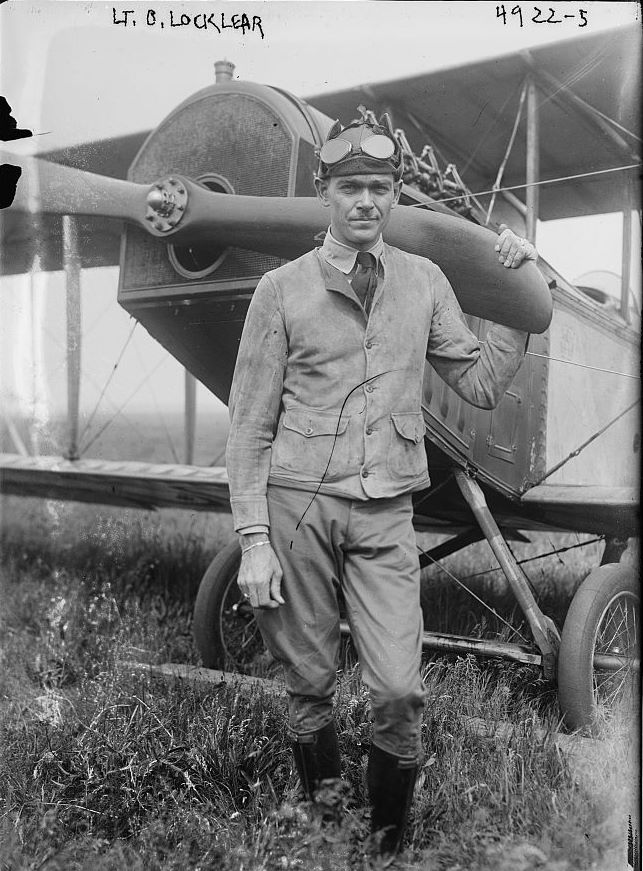
Locklear often claimed: “Safety second is my motto,” although, he wasn’t someone who tossed safety to the air. He had a definite reason for what he was doing. “I don't do these things because I want to run the risk of being killed,” he once explained. “I do it to demonstrate what can be done. Somebody has got to show the way someday we will all be flying and the more things that are attempted and accomplished, the quicker we will get there.”
The glamour of wingwalkers and their seeming invincibility was too much to resist, and many men and women took up wingwalking professionally.Charles Lindbergh, before he flew nonstop from New York City to Paris, made a living performing aerial stunts in country fairs. His favorite stunt was to jump from an airplane wearing two parachutes. Shortly after his first chute opened, he would cut away from it so that he would continue to plunge toward the ground. As the audience gasped, with only seconds left before he hit the ground, Lindbergh would pull his second chute and land safely.
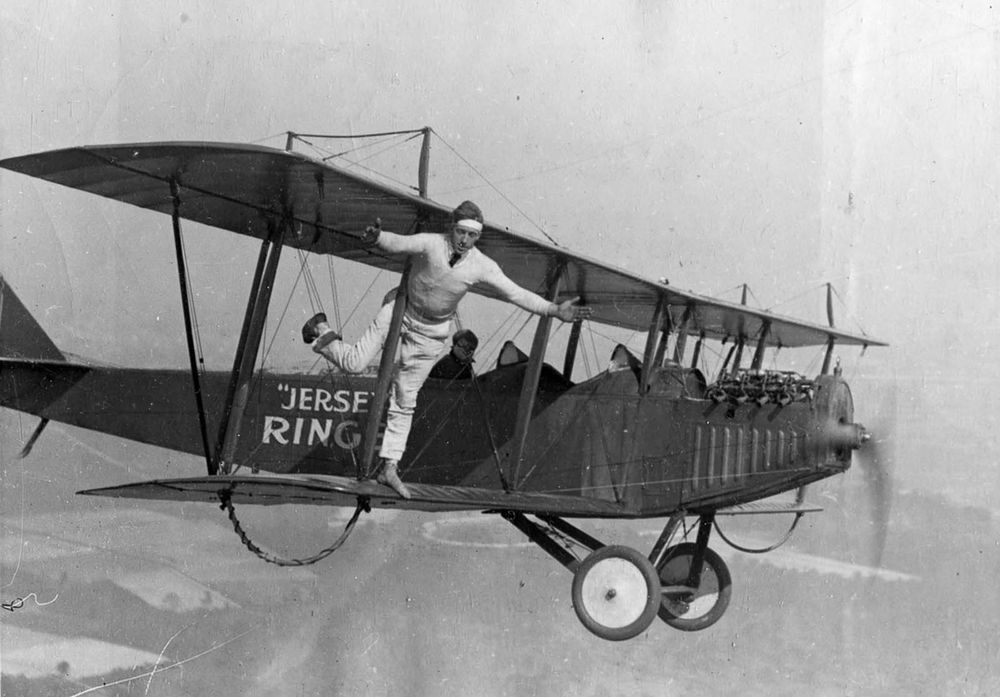 A wingwalker stands on one leg on the wing of a Curtiss ‘Flying Jenny’ biplane in the air above New Jersey. 1920.
A wingwalker stands on one leg on the wing of a Curtiss ‘Flying Jenny’ biplane in the air above New Jersey. 1920.
Aside from men, several women became well-known wingwalkers
Bessie Coleman, the first African-American female licensed pilot, performed figure eights, loops, and near-ground dips. She was also a parachute jumper. Gladys Ingle’s stunts included moving from plane to plane in mid-air, and flying on the wing of a plane while it passed under a bridge. One of Ingle's stunts involved changing a tire in mid-air. In another stunt, she shot arrows at targets while wingwalking. In yet another daring stunt, she stood on the wings as the pilot made loops. Lillian Boyer was the first woman to transfer from a speeding automobile to an airplane, and Gladys Roy holds the world record for a lowest parachute jump from 100 feet. Roy also played tennis while on air, walked blindfolded across the wings, and danced the Charleston.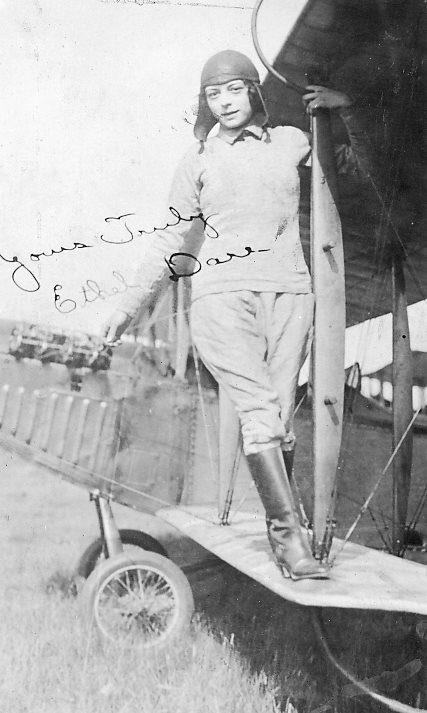
There was a controversy about who was the real Ethel Dare because several people claimed that they were the real Ethel Dare. Some say she was Ethel Mann Dare, or Ethel Gilmore Harris or Lady Anomar. She was married three times and Ethel performed under different names.

- She performed jumps into Lake Michigan in Illinois.
- She washed her hair while standing on the wing of a plane.
- She made 500 parachute jumps and tested parachutes
- Full Catalogs
Today there are acts that use wing-walkers but in 1920 it must if been incredible to see Ethel Dare. Most people had never even seen a plane before. There were women that thought it should be against the law to do such dangerous stunts. Other women thought that they belonged in the kitchen not walking on a wing of a plane.
Ethel Dare (born Ethel Gilmore) was the first woman to change planes in the air. Pretty and petite she was billed as the "1920 Aerial Sensation," the "Queen of the Air" or provocatively as "The Flying Witch." Before her career in aviation, she was a flying trapeze performer with the Barnum And Bailey Circus.
In 1936, the US government banned wingwalking below 1,500 feet, which effectively brought the practice to an end because audiences could no longer see stunts performed above that altitude. Federal regulations also started requiring stunt people to wear parachutes, whether it was part of their act or not. This was followed by increased insurance premiums that made wingwalking and stunting simply unaffordable.
Wingwalking was revived in the 1970s, but new rules required them to be anchored firmly to the wings of the airplane. The uncertainty of whether a wingwalker was going to live or die was no longer there. Still, wingwalking as a sport is catching on and its popularity is soaring, with various professional wingwalkers performing around the world.
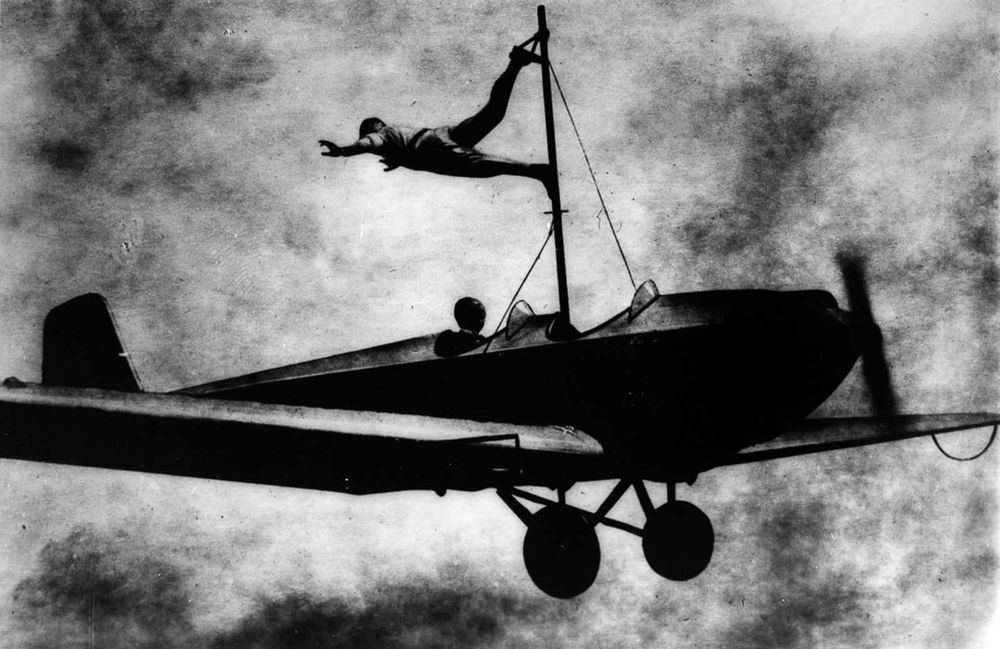 Richard Schindler practices a stunt. 1919.
Richard Schindler practices a stunt. 1919.
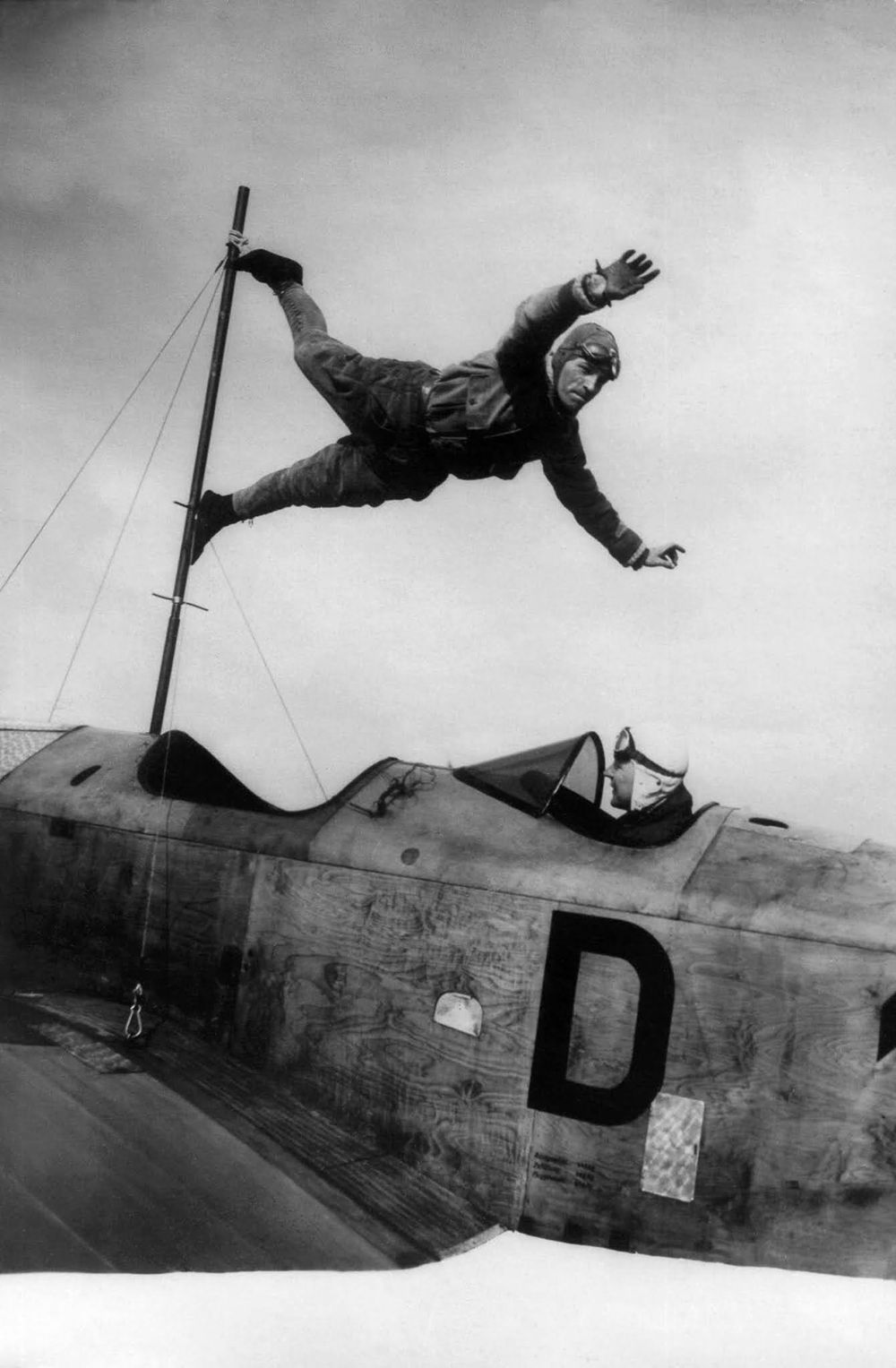 Richard Schindler practices a trick on a Klemp plane piloted by Richard Perlia. 1927.
Richard Schindler practices a trick on a Klemp plane piloted by Richard Perlia. 1927.
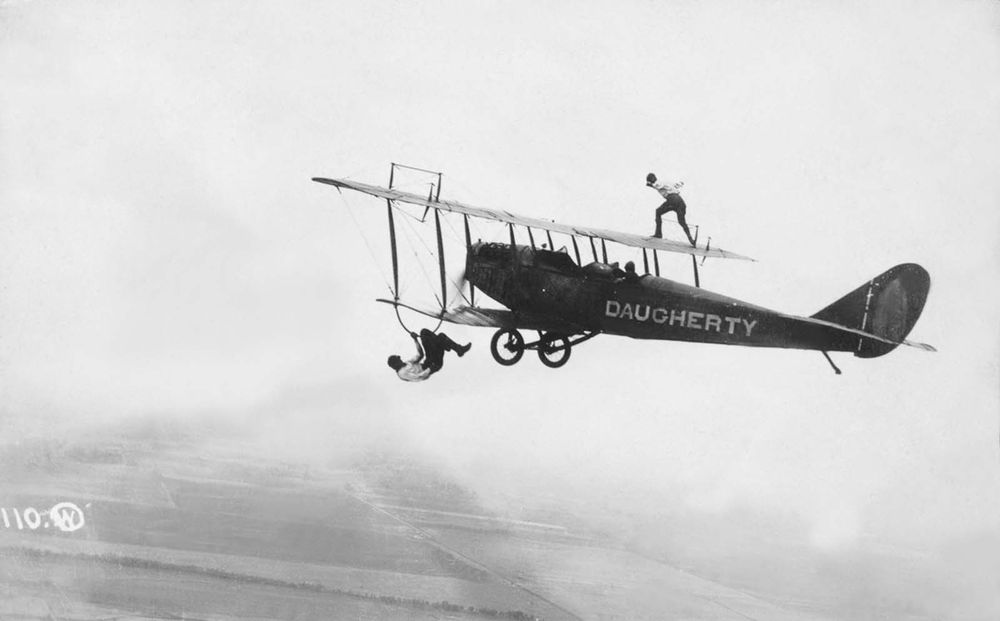 Two wingwalkers perform on a biplane in 1920.
Two wingwalkers perform on a biplane in 1920.
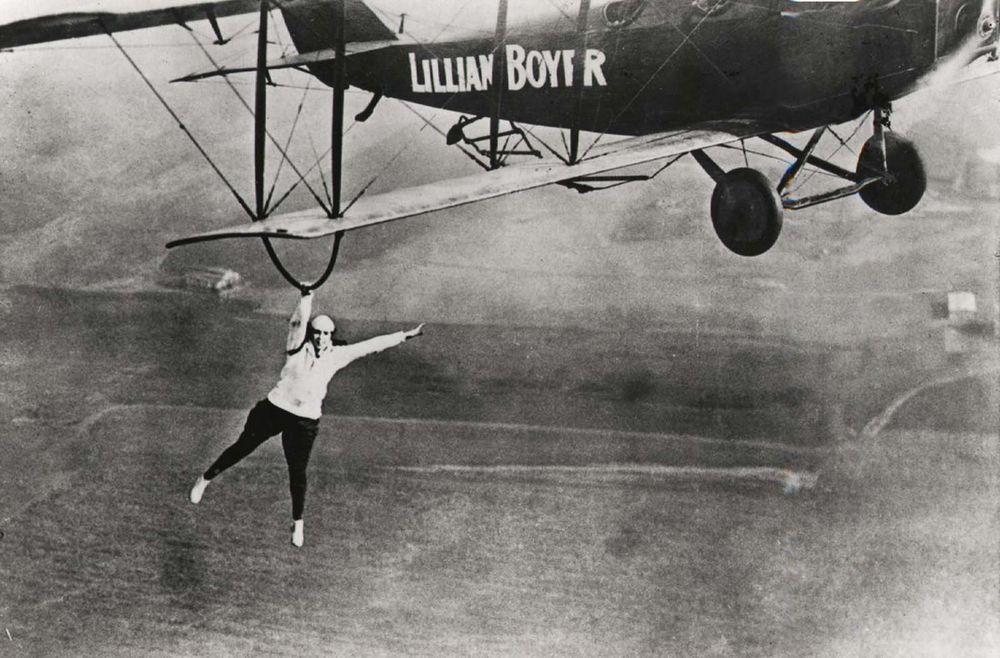 Wingwalker Lillian Boyer dangles from the wing of a biplane. 1922.
Wingwalker Lillian Boyer dangles from the wing of a biplane. 1922.
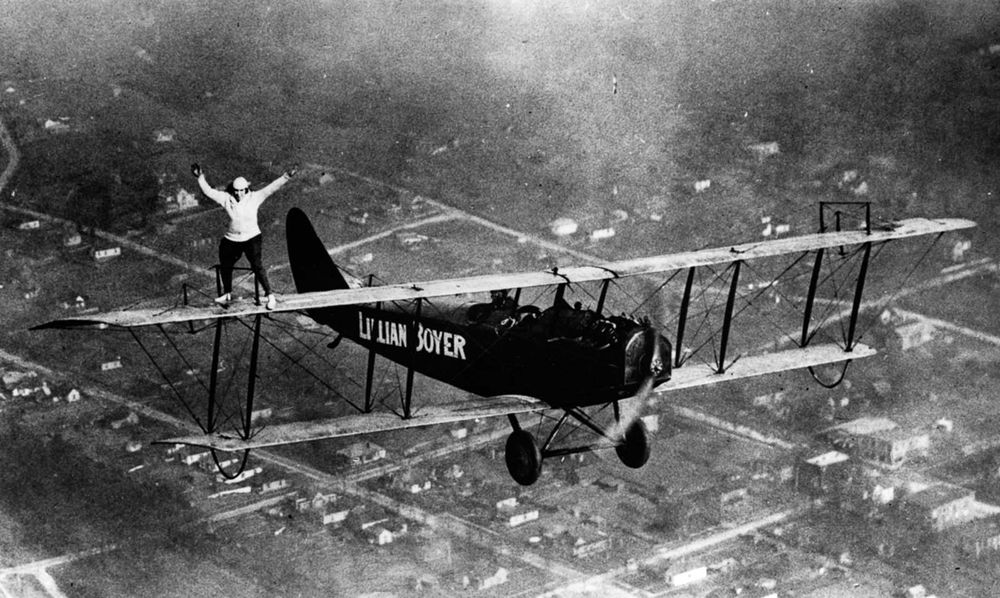 Lillian Boyer wing-walks in 1922.
Lillian Boyer wing-walks in 1922.
 Lillian Boyer hangs inverted from an airplane using her leg, circa 1920s.
Lillian Boyer hangs inverted from an airplane using her leg, circa 1920s.
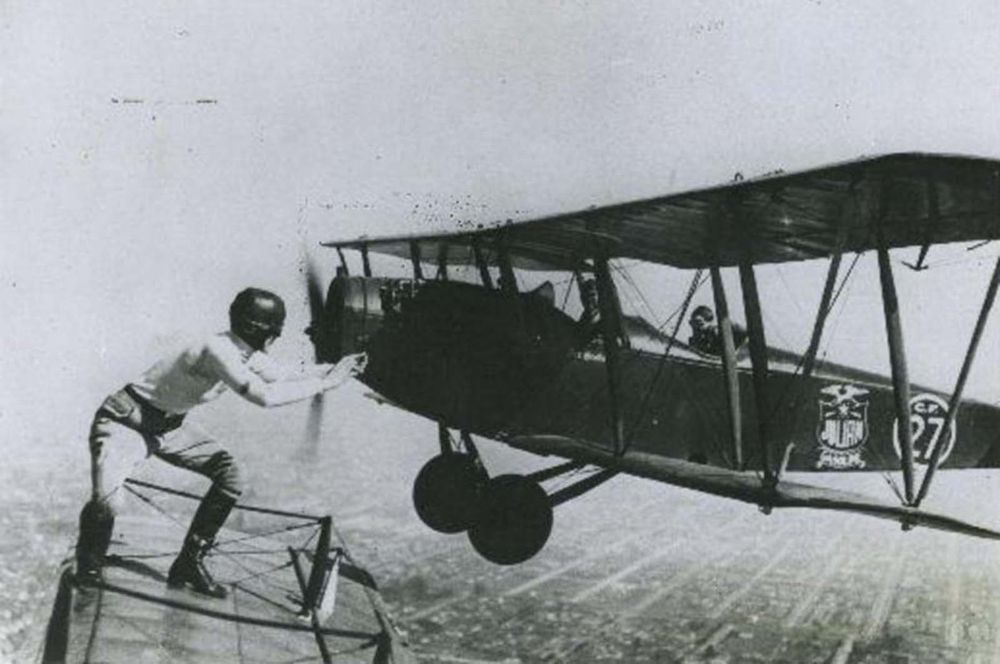 Gladys Ingle walks on the wings of an airplane.
Gladys Ingle walks on the wings of an airplane.
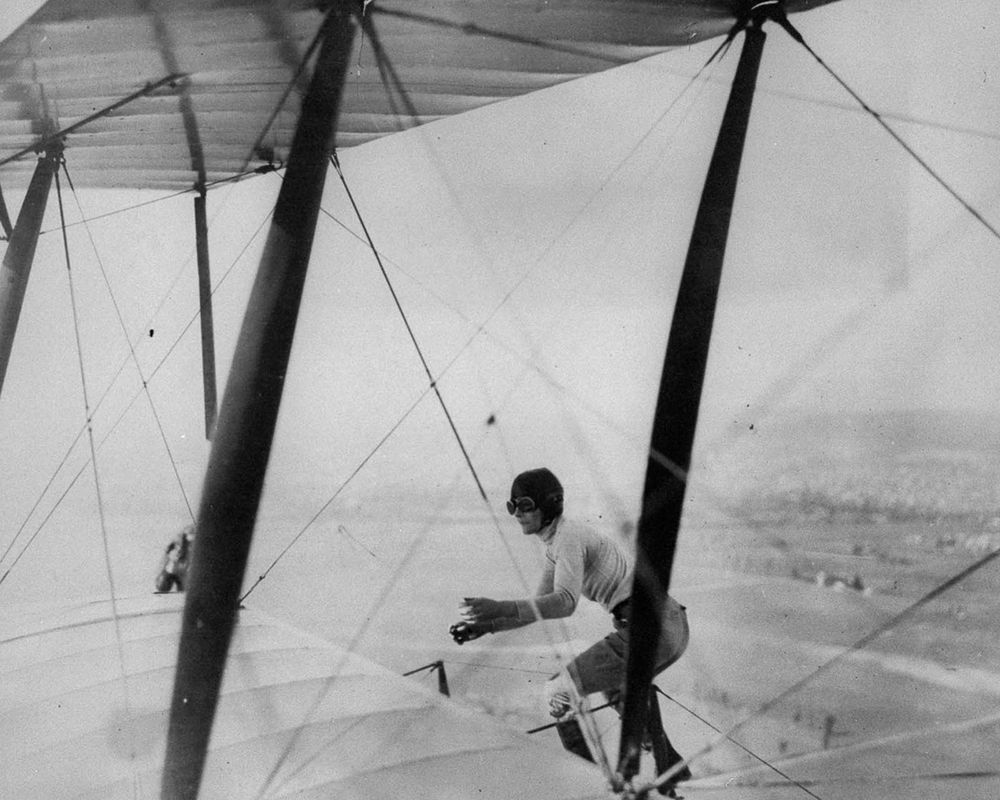 Gladys Ingle balances atop a biplane. 1926.
Gladys Ingle balances atop a biplane. 1926.
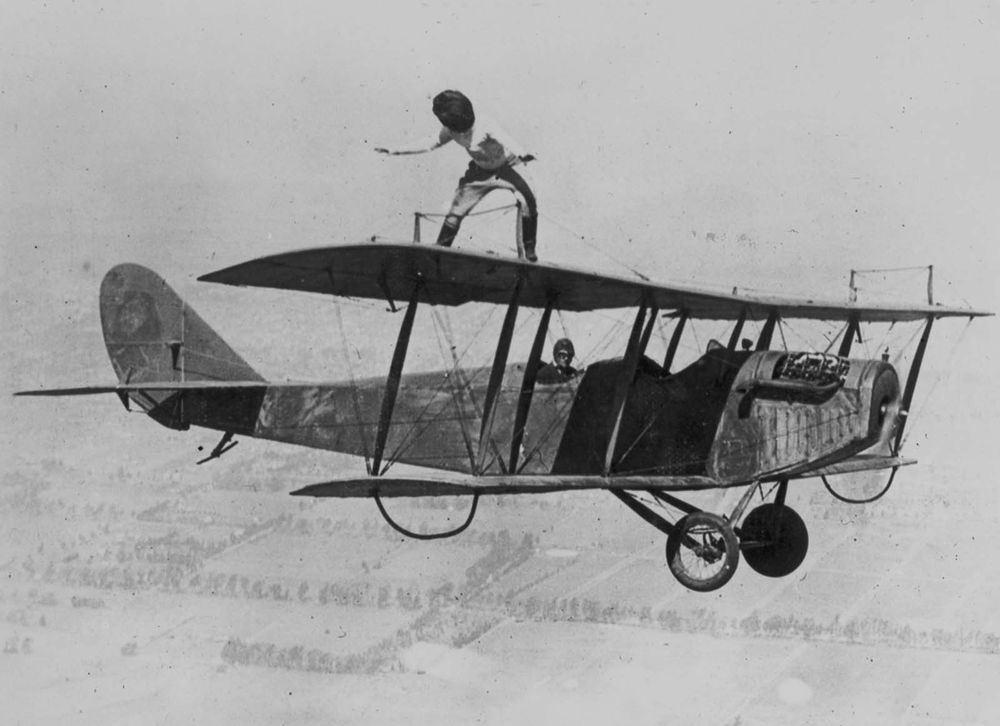 Gladys Roy walks the wings of a Curtiss JN-4 ‘Jenny’ biplane over Los Angeles while blindfolded. 1924.
Gladys Roy walks the wings of a Curtiss JN-4 ‘Jenny’ biplane over Los Angeles while blindfolded. 1924.
 Billy Bomar and Uva Kimmey of the Howard Flying Circus wing-walk on a biplane over New York State, 1930.
Billy Bomar and Uva Kimmey of the Howard Flying Circus wing-walk on a biplane over New York State, 1930.